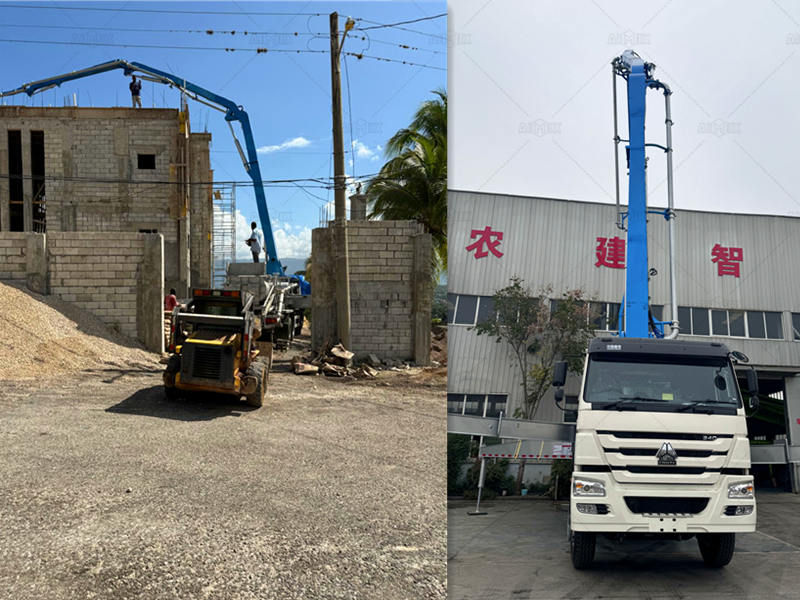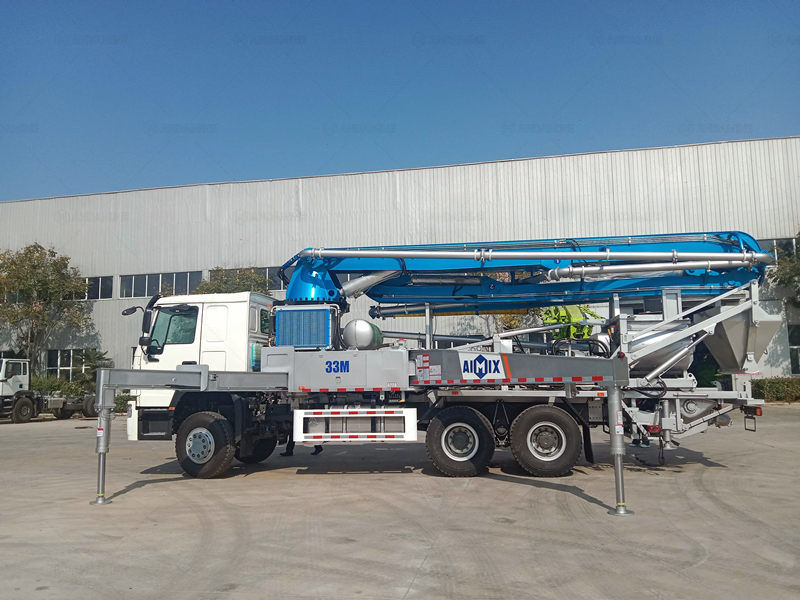Tips for Calculating Cost of Concrete Pump Truck Powering Everyday for Factory Construction Project
- aimixglobal5
- Sep 23, 2025
- 4 min read
When planning a large-scale project such as building a factory, construction managers need to consider equipment operation expenses as one of the most critical parts of the overall budget. Among the heavy machinery used in such projects, a concrete pump truck stands out as an indispensable tool because of its ability to transport concrete efficiently across large construction areas. However, while the performance advantages are obvious, it is equally important to evaluate the cost of concrete pump truck operation, especially the daily powering requirements. By accurately estimating these costs, project managers can keep expenses under control and improve the efficiency of resource allocation.

Understanding the Role of a Concrete Pump Truck in Factory Construction
A factory project usually involves pouring large volumes of concrete for foundations, columns, walls, and floors. Traditional manual methods or smaller pumps often prove inefficient for these large pours. A concrete pump truck integrates both a pump system and a truck-mounted boom, enabling workers to place concrete quickly and precisely, even in areas that are hard to reach. This level of efficiency directly supports project timelines and reduces the need for extra labor. However, achieving such productivity requires consistent fueling, maintenance, and energy supply, which leads to costs that need to be calculated properly.
Factors that Influence the Cost of Concrete Pump Truck Operation
When breaking down the daily operating expenses, project managers need to account for multiple factors beyond just the purchase or rental price. The cost of concrete pump truck powering is affected by:
1. Fuel Consumption:
Concrete pump trucks are heavy-duty machines that run on diesel or sometimes electricity. Fuel costs depend on engine size, pump capacity, and the number of hours worked per day. In factory construction, where pouring may occur over extended shifts, daily fuel use can be significant.
2. Concrete Volume Delivered:
The more cubic meters of concrete pumped, the higher the strain on the equipment. Higher pumping volumes increase fuel demand and may require additional cooling systems, thereby raising operating costs.
3. Working Conditions:
If the construction site has uneven terrain or requires concrete to be pumped to great heights or distances, the pump truck will consume more power, which increases the cost of concrete pump operation on a daily basis.
4. Maintenance and Wear:
Each day of use adds wear to parts like hydraulic systems, hoses, and pumping cylinders. Regular maintenance and spare part replacements add to the effective daily powering cost.
How to Calculate the Daily Powering Cost of a Concrete Pump Truck
To calculate costs effectively, it is best to follow a step-by-step approach:
1. Determine Average Fuel Consumption per Hour:
Manufacturers usually provide an estimate of fuel use per hour. For example, a medium-sized concrete pump truck may consume 25–35 liters of diesel per hour.
2. Multiply by Working Hours per Day:
If the truck works 8 hours per day, fuel use could range between 200–280 liters daily. Multiplying this by the local diesel price gives the basic daily fueling cost.
3. Add Lubrication and Maintenance Costs:
Apart from fuel, hydraulic oil, grease, and routine part inspections are required daily or weekly. Allocating a fixed daily cost for these ensures accurate budgeting.
4. Include Operator Costs:
The truck cannot operate without skilled labor. Wages for operators and technicians should be factored into the powering costs, as they are part of running the machine every day.
5. Calculate Depreciation and Amortization:
If the pump truck is owned rather than rented, the cost of concrete pump truck depreciation should be spread across the project timeline. This gives a true picture of how much the machine adds to daily construction costs.
Balancing Efficiency and Costs
While calculating powering costs is essential, project managers should also focus on how to maximize output per unit of fuel or power used. For example, scheduling concrete pours in batches rather than sporadically throughout the day ensures the concrete pump truck operates continuously and avoids unnecessary idling. Similarly, regular preventive maintenance reduces breakdowns and fuel inefficiency, ultimately lowering the long-term cost of concrete pump truck operation.
Comparing Costs Between Pump Trucks and Alternatives
Some projects may consider using smaller pumps or stationary pumps instead of a concrete pump truck. While a stationary pump may offer lower fueling costs, it often requires additional pipelines and manual setup, which can extend working hours and labor expenses. On the other hand, a concrete pump truck combines mobility and high delivery capacity, making it more cost-effective for large factory construction even if the daily powering expenses seem higher at first glance. By comparing different equipment options and aligning them with project needs, managers can ensure they select the most financially efficient solution.
Practical Tips to Reduce Daily Powering Costs
1. Monitor Fuel Use Closely: Install fuel monitoring systems to avoid wastage and identify inefficiencies.
2. Train Operators for Efficient Use: Skilled operators know how to minimize idle time and operate pumps at optimal pressure.
3. Choose the Right Pump Size: Overusing a large pump for small pours wastes fuel, while underusing a small pump in large pours increases cycle times and labor.
4. Plan Concrete Deliveries in Advance: Coordinating with batching plants to ensure timely arrivals reduces downtime and unnecessary fuel use.
Conclusion
In factory construction projects, the concrete pump truck is a cornerstone of efficient and timely concrete placement. However, to truly benefit from its productivity, managers must understand how to calculate and control the cost of concrete pump truck powering on a daily basis. By accounting for fuel, maintenance, labor, and depreciation, and by implementing strategies to optimize efficiency, construction teams can keep costs within budget while still enjoying the advantages of high-capacity pumping. Effective planning and careful calculation ensure that the daily operation of a concrete pump truck supports project goals without creating financial strain, making it a reliable investment for any large-scale construction project.








Comments